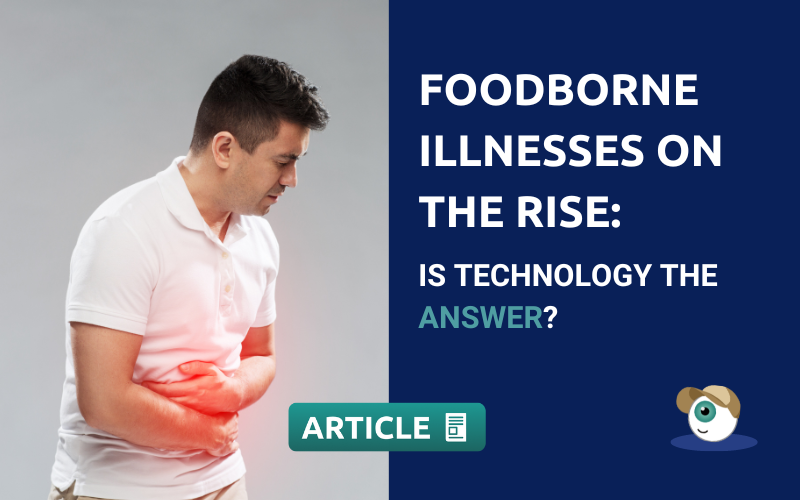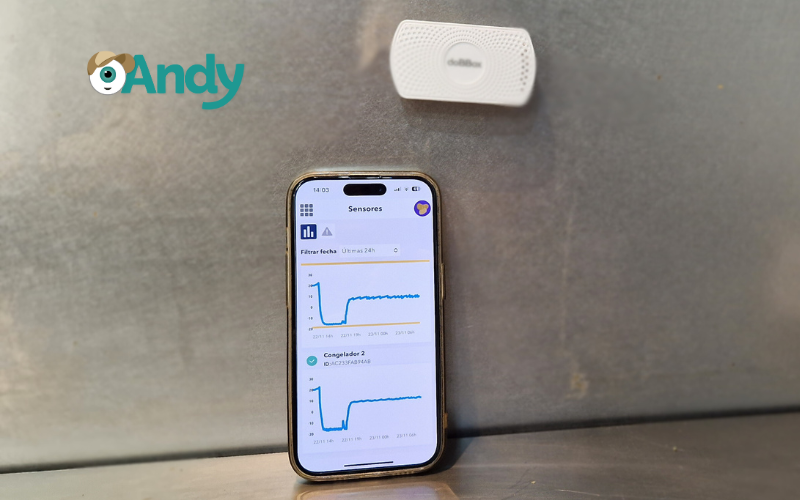Foodborne Illnesses on the Rise: Is Technology the Answer?

Despite stringent regulations and best practices, the incidence of foodborne outbreaks continues to rise, worldwide.
Each year, an estimated 48 million Americans — about one in six — suffer from foodborne illnesses, according to the Centers for Disease Control and Prevention. Of these, 128,000 are hospitalised and 3,000 die.
In the EU/EEA, the notification rates for listeriosis and yersiniosis in 2022 were the highest in over 10 years.
A recent surge in Austria serves as a stark reminder that the battle against foodborne pathogens is far from over.
With a 42% increase in outbreaks and a significant rise in cases compared to 2022, it’s clear that traditional food safety measures may not be enough.
While achieving zero risk is an unattainable ideal, the escalating numbers of outbreaks demand a critical reassessment of our food safety strategies.
This article delves into the factors contributing to this alarming trend and explores how technology can be a powerful ally in the fight against foodborne illness
The Rising Tide of Foodborne Illness
As mentioned, the year 2023 marked a disturbing escalation in foodborne outbreaks in Austria, with a staggering 42 incidents reported, a 40% increase compared to the previous year.
This surge resulted in 222 affected individuals, including 38 hospitalisations and tragically, one fatality.
Salmonella emerged as the primary culprit, accounting for 21 outbreaks and claiming one life.
These figures are not isolated to Austria.
In fact, as of the time of publication, Spain is grappling with its own foodborne illness outbreak, with multiple cases of Salmonella reported by authorities. A total of 17 people have gone down with “severe food poisoning” after eating at two restaurants operated by a gourmet burger chain in the capital city.
In the United States, the Centers for Disease Control and Prevention (CDC) estimates that foodborne diseases affect millions of people annually, resulting in significant healthcare costs and lost productivity.
The United Kingdom has experienced in recent years, a rise in foodborne outbreaks linked to Salmonella and Campylobacter, with a particular focus on poultry-related illnesses.
Germany has also reported increased cases of E. coli and Listeria.
While France faced challenges with norovirus outbreaks in institutional settings like schools and hospitals, highlighting the vulnerability of vulnerable populations.
While the data presented here highlights the seriousness of the situation, it’s important to note that many countries have robust food safety systems in place and are working diligently to protect public health.
Why do foodborne illnesses seem to go on the rise?
The complex interplay of factors contributing to this global challenge includes:
- Globalisation of food supply chains: Increased reliance on imported food products can introduce new pathogens and vulnerabilities.
- Changing consumer habits: The rise of ready-to-eat meals and increased consumption of fresh produce has altered the epidemiological landscape.
- Antimicrobial resistance: The emergence of drug-resistant pathogens poses a significant threat to public health.
- Climate change: Extreme weather events can disrupt food production and distribution, creating opportunities for contamination.
This perfect storm has created a pressing need for innovative solutions to protect public health and safeguard the integrity of the food supply.
The Cost of Foodborne Illness
The consequences of foodborne illness extend far beyond the immediate health impact.
For individuals, the effects can be debilitating, leading to lost productivity, medical expenses, and, in severe cases, long-term health complications.
For businesses, the repercussions are equally severe.
Outbreaks can lead to significant financial losses due to product recalls, legal fees, and damage to reputation.
Consumer trust is a fragile commodity, and a single outbreak can erode years of goodwill.
Moreover, the regulatory environment is becoming increasingly stringent, with businesses facing hefty fines and penalties for non-compliance.
The Role of Technology in the Prevention of Foodborne Illnesses
Traditional food safety practices, while essential, have limitations.
Manual record-keeping, time-consuming inspections, and reactive responses to outbreaks are no longer sufficient to protect consumers and safeguard businesses.
Advanced food safety management systems like Andy are revolutionising the way we approach food safety and kitchen operations.
By automating tasks, improving traceability, and providing real-time insights, Andy is a powerful ally in the reduction of the risk of foodborne illness.
Key benefits of food safety technology:
- Enhanced traceability: Track food products from farm to fork, identifying the source of contamination in case of an outbreak.
- Real-time monitoring: Employ IoT sensors to monitor critical control points such as temperature and humidity, ensuring adherence to food safety standards. This enables early detection of potential hazards and rapid intervention.
- Data-driven decision making: Leverage AI and machine learning to analyse vast amounts of data, identify patterns, and predict risks. Predictive analytics can help businesses anticipate and prevent outbreaks.
- Improved communication and collaboration: Facilitate seamless information sharing among stakeholders in the food supply chain, including suppliers, manufacturers, retailers, and regulators.
Andy: Your Partner in Food Safety
Andy is a cutting-edge food safety management platform designed to empower businesses in their fight against foodborne illness.

With features such as digital checklists, real-time temperature monitoring, food expiry labelling, food safety auditing and automated reporting, Andy provides a comprehensive solution for ensuring food safety in food service businesses of all types.
By using Andy, food service businesses can:
- Reduce the risk of contamination through proactive monitoring and prevention.
- Streamline operations and improve efficiency. By automating routine tasks, Andy frees up staff to focus on higher-value activities.
- Demonstrate a commitment to food safety to customers and regulators. A robust food safety management system can enhance a business’s reputation and build trust.
- Protect their brand reputation and financial stability. By preventing outbreaks, businesses can avoid costly recalls, legal battles, and reputational damage.
In a world increasingly fraught with foodborne illness, Andy is your partner in protecting public health.
Don’t wait for a crisis.
Take action today!

